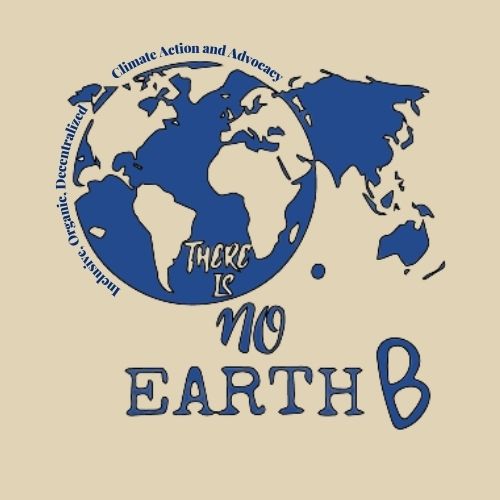Request for Disaster Risk Review of the Great Nicobar Project
To
Shri Rajendra Singh
Member & Head of Department
National Disaster Management Authority (NDMA)
A-1, Safdarjung Enclave
New Delhi – 110029
Subject: Request for Disaster Risk Review of the Great Nicobar Project
Respected Sir/Madam,
We, at There Is No Earth B (TINEB), a citizen environmental group, urgently call on the authorities to take immediate action regarding the proposed Great Nicobar Project — involving a transshipment port, airport, township, and power facilities — which raises major disaster risk concerns in one of India’s most seismically active and ecologically sensitive zones.
We, as a people’s movement, respectfully urge the authorities to:
- Conduct an independent and comprehensive disaster risk assessment for the region.
- Ensure public disclosure of all seismic and geological data related to the project.
- Recommend that the government permanently halt the project due to its unacceptable seismic and ecological risks.
Great Nicobar is part of the tectonically volatile region known as the Ring of Fire, responsible for most of the world’s earthquakes and volcanoes. It lies near the epicenter of the devastating 2004 Indian Ocean earthquake (magnitude $9.1$), which caused massive loss of life and significant land shifts on the island. Although the project’s Environmental Impact Assessment notes this seismic risk, it fails to thoroughly evaluate long-term disaster implications or provide a robust risk assessment.
In the past decade alone, the area has experienced over 440 earthquakes — averaging around 44 per year — with magnitudes often between $4.0$ and $6.6$. These recurring tremors, mostly originating near the island, indicate ongoing tectonic instability. The proposed project envisions bringing over $6.5$ lakh people to the island, drastically increasing exposure to disaster risk in a region with a known history of severe seismic activity.
Should another major quake strike, not only would infrastructure investments be at high risk, but the likelihood of oil and chemical spills from port operations could also lead to widespread environmental damage in an area globally recognized for its biodiversity.
Climate change has consistently been a rising issue all over the world but especially in India and while data is still inconclusive about the impact of climate on magnitude of earthquakes; we know without a doubt that it exacerbates weather events and environmental stressors increasing vulnerability of ecosystems as well as civilisations.
We understand that the development and safety of the nation is of paramount importance, but this development cannot be sustained. This will lead to long-term loss of infrastructure and ecological equilibrium, as well as the short-term losses of people’s lives and livelihood. The potential long-term and short-term losses cannot be ignored or taken lightly.
We eagerly anticipate your urgent attention to this critical matter.
Concerned Citizens,
There Is No Earth B
Copied to:
- Shri A.S.P.S. Raviprakash (Secretary of Disaster Management and Urban Development of Andaman & Nicobar Administration)
- Shri Arjun Sharma (Deputy Commissioner of South Andaman District)
- Amit Shah (Minister of Home Affairs)
- Govind Mohan (Home Secretary of Ministry of Home Affairs)
- Shri Sanjeev Kumar Jindal (Additional Secretary of Disaster Management Division of MHA)
- Shri Nitesh Kumar Vayas (Additional Secretary of Union Territories Division of MHA)
Sources:
- Amateur Seismic Centre. “Seismicity of the Andaman & Nicobar Islands.” ASC-India, https://asc-india.org/seismi/seis-andaman-nicobar.htm. Accessed 10 June 2025.
- Keerthana, R. “Ring of Fire: the most dynamic place on Earth.” The Hindu, https://www.thehindu.com/in-school/sh-science/ring-of-fire/article8556173.ece. Accessed 10 June 2025.
- U.S. Geological Survey. “Tsunami Generation from the 2004 M $9.1$ Sumatra–Andaman Earthquake.” U.S. Geological Survey, https://www.usgs.gov/centers/pcmsc/science/tsunami-generation-2004-m91-sumatra-andaman-earthquake. Accessed 10 June 2025.
- Ratcliffe, Rebecca. “Ceremonies Held Across Asia to Mark 20 Years Since Boxing Day Tsunami.” The Guardian, https://www.theguardian.com/world/2024/dec/26/boxing-day-tsunami-december-26-2004-20th-anniversary-ceremonies. Accessed 10 June 2025.
- Sekhsaria, Pankaj. “Great Nicobar Development Projects Disregard Risk in Earthquake-Prone Area.” Frontline, https://frontline.thehindu.com/environment/great-nicobar-development-projects-disregard-risk-in-earthquake-prone-area/article66349616.ece. Accessed 10 June 2025.
- A. Bird, Winifred and Grossman, Elizabeth. “Chemical Aftermath: Contamination and Cleanup Following the Tohoku Earthquake and Tsunami.” EHP Publishing, https://ehp.niehs.nih.gov/doi/10.1289/ehp.119-a290. Accessed 5 July 2025.
- Williams, Kori. “Does Global Warming Cause Earthquakes?” Green Matters, https://www.greenmatters.com/weather-and-global-warming/does-global-warming-cause-earthquakes. Accessed 10 June 2025.
- Koshy, Jacob. “Environment impact study for Great Nicobar project downplays earthquake risk.” The Hindu, https://www.thehindu.com/sci-tech/energy-and-environment/environment-impact-study-for-great-nicobar-project-downplays-earthquake-risk/article69777674.ece. Accessed 7 July 2025.
More info on #SaveNicobar, here.
